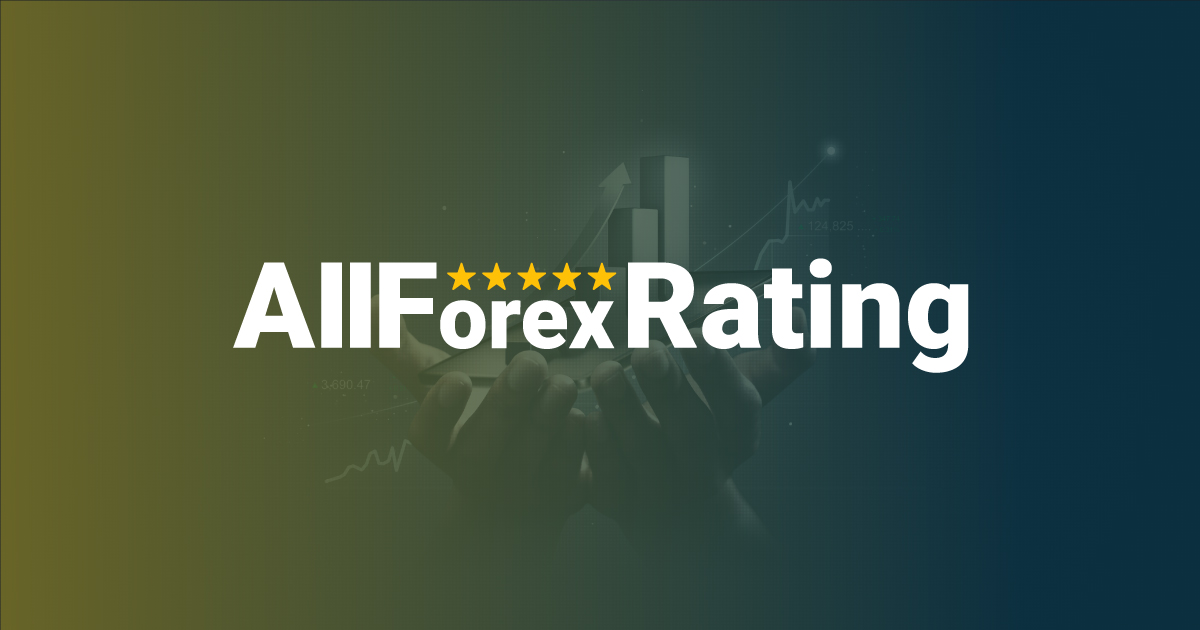What is Leverage in Forex: A Beginner’s guide
What is Leverage in Forex: A Beginner’s guide
Read on to learn more about Forex, leverage, and margin and how these concepts can enhance your FX trading experience.
-

- by ALLFOREXRATING.COM
- 1st February 2023 | Post Views: 1712

Leverage can be an essential feature to use, especially when trading foreign currencies via Contract of Difference (“CFD”). Leverage allows you to open larger positions with relatively little capital. But how does it work, and how can you benefit from it?
Read on to learn more about Forex, leverage, and margin and how these concepts can enhance your FX trading experience.
What is forex?
Forex (foreign exchange or FX) occurs when you change one currency to another. In other words, any transfer of currencies between buyers and sellers at an agreed price is foreign exchange. That may include individuals, banks, companies and governments [1].
If you’ve attempted to buy something from online stores or travelled the world, you may have made at least one forex transaction or currency conversion. That’s the practical use for forex.
Forex trading works by buying one currency (base currency) and simultaneously selling another currency (quote currency). All currencies in the FX markets are quoted in pairs and may fall into one of three categories, major pairs, minor pairs and regional pairs.
There are plenty of terms you’ll encounter while trading currency pairs, and some of them include margin and leverage. Let’s explore them further.
What is margin?
In FX, margin is the initial deposit required by the broker as starting capital for your trading account. Margin is also a small amount of capital you need to put up to open and maintain any forex position [2].
This small capital requirement acts as a guarantee or collateral to assure your broker that you can open and maintain a trade until you close it.
Margin is often expressed as a percentage of the full position size you intend to open. Moreover, margin requirements will differ across brokers and currency pairs. However, it normally falls in between 0.25% and 10% or higher.
As you’ll see later in this guide, your broker’s margin requirement directly relates to the leverage you get.
Some other terms you’ll encounter include:
- Used margin – this is the margin tied up and is needed to keep all your current positions open.
- Free margin – This is the margin available to open new FX positions in your trading account.
- Margin call – Your broker issues a margin call to deposit additional funds into your trading account to keep your current positions open.
What is leverage?
Leverage allows you to open a bigger position using a fraction of your capital while borrowing the rest from your broker. Usually, leverage is based on your broker’s margin requirement and is often represented as a ratio [3].
Every broker has unique margin requirements to support their leverage ratios. Leverage will also vary from broker to broker and across asset classes.
A higher margin requirement means you may get a lower leverage multiplier of your capital, while a minor margin requirement may come with a higher leverage multiplier.
What is leverage in forex trading?
Leverage in forex trading allows you to enjoy more exposure to the forex markets using the minimum margin required by your broker [4]. This allows traders to trade a larger position in the forex market with a smaller capital. Using leverage can be a double edged sword as while it can increase the potential for larger gains, it can also increase the potential for larger losses as well.
How does leverage work in forex?
Leverage is a dynamic tool in forex trading. It empowers traders to take on much larger positions than they would otherwise control with their margin.
By putting down a fraction of the trade’s full value, the broker loans you the rest of the capital needed to trade a larger position [5].
Many brokers present leverage as a ratio. Some common leverage ratios you’ll encounter include 50:1, 100:1, and 500:1(according to applicable regulations).
What do these ratios mean?
Let’s say you wanted to control a $100,000 forex position. Under normal circumstances, that may be a difficult ask. Instead, your broker sets aside a $500 margin from your account and loans you the difference, which allows you to control a $100,000 position. In this case, your leverage, as a ratio, is 200:1.
One key thing to remember about leverage is that it can be a double-edged sword. Although a leveraged position can magnify your returns, it can also magnify your losses beyond your invested capital. Only use leverage that you’re comfortable with, and if you’re a beginner, use lower leverage for a start [6].
Advantages of using leverage
Here are some benefits of using leverage [7]
Increase your rate of return
The primary role of leverage in forex trading is to amplify a trader’s return on investment.
Using leverage on your trades can boost your potential upside, provided risks are properly managed.
Free your capital
Leverage can help you manage your capital. With a solid trading plan, you can use borrowed capital from a broker to grow your trading account.
Using part of your capital to enter a position is enables traders to open positions as the barrier to entry (in this case, capital) is lower. This also allows you to allocate your limited resources with greater flexibility, through diversifying your investment to other asset classes and trading instruments.
Boost returns on low volatility
Currency markets may experience certain period of low volatility more commonly than stocks, ETFs or Index Funds. In times of low volatility, leverage plays a role in enhancing your exposure, potentially giving you higher returns per trade, although this also means great potential for losses if the market moves against your position.
Risks of Using Leverage
Leverage comes with some downsides.
Amplify losses
Leveraging is a double-edged sword.
While it may help enhance your potential upside, it can take you out of the game quicker than you would expect. A small change in currency prices against your position can wipe out your account, leading to significant losses that exceed your invested capital.
More fees
The fees and commissions you pay may vary across brokers. Expensive margin rates slowly cut your upside, even with winning trades.
Risk of over-leveraging
Leverage can be tempting and can cause you to over-leverage their account, which can lead to over-trading and poor risk management which can potentially result in your capital being wiped out.
Increased volatility
Leverage can also increase the volatility of your trades, which can lead to larger and more rapid price movements. This can lead to a rapid depletion of your trading account if not monitored closely and have a risk management set in place.
Trade Forex with Vantage
Ready to explore the forex markets? Open an account with Vantage Markets today and get started with an industry-leading margin requirement and leverage. You’ll also access hundreds of currency pairs that you can select based on your trading strategy.
Write a Comment
What is Leverage in Forex: A Beginner’s guide
Read on to learn more about Forex, leverage, and margin and how these concepts can enhance your FX trading experience.

Leverage can be an essential feature to use, especially when trading foreign currencies via Contract of Difference (“CFD”). Leverage allows you to open larger positions with relatively little capital. But how does it work, and how can you benefit from it?
Read on to learn more about Forex, leverage, and margin and how these concepts can enhance your FX trading experience.
What is forex?
Forex (foreign exchange or FX) occurs when you change one currency to another. In other words, any transfer of currencies between buyers and sellers at an agreed price is foreign exchange. That may include individuals, banks, companies and governments [1].
If you’ve attempted to buy something from online stores or travelled the world, you may have made at least one forex transaction or currency conversion. That’s the practical use for forex.
Forex trading works by buying one currency (base currency) and simultaneously selling another currency (quote currency). All currencies in the FX markets are quoted in pairs and may fall into one of three categories, major pairs, minor pairs and regional pairs.
There are plenty of terms you’ll encounter while trading currency pairs, and some of them include margin and leverage. Let’s explore them further.
What is margin?
In FX, margin is the initial deposit required by the broker as starting capital for your trading account. Margin is also a small amount of capital you need to put up to open and maintain any forex position [2].
This small capital requirement acts as a guarantee or collateral to assure your broker that you can open and maintain a trade until you close it.
Margin is often expressed as a percentage of the full position size you intend to open. Moreover, margin requirements will differ across brokers and currency pairs. However, it normally falls in between 0.25% and 10% or higher.
As you’ll see later in this guide, your broker’s margin requirement directly relates to the leverage you get.
Some other terms you’ll encounter include:
- Used margin – this is the margin tied up and is needed to keep all your current positions open.
- Free margin – This is the margin available to open new FX positions in your trading account.
- Margin call – Your broker issues a margin call to deposit additional funds into your trading account to keep your current positions open.
What is leverage?
Leverage allows you to open a bigger position using a fraction of your capital while borrowing the rest from your broker. Usually, leverage is based on your broker’s margin requirement and is often represented as a ratio [3].
Every broker has unique margin requirements to support their leverage ratios. Leverage will also vary from broker to broker and across asset classes.
A higher margin requirement means you may get a lower leverage multiplier of your capital, while a minor margin requirement may come with a higher leverage multiplier.
What is leverage in forex trading?
Leverage in forex trading allows you to enjoy more exposure to the forex markets using the minimum margin required by your broker [4]. This allows traders to trade a larger position in the forex market with a smaller capital. Using leverage can be a double edged sword as while it can increase the potential for larger gains, it can also increase the potential for larger losses as well.
How does leverage work in forex?
Leverage is a dynamic tool in forex trading. It empowers traders to take on much larger positions than they would otherwise control with their margin.
By putting down a fraction of the trade’s full value, the broker loans you the rest of the capital needed to trade a larger position [5].
Many brokers present leverage as a ratio. Some common leverage ratios you’ll encounter include 50:1, 100:1, and 500:1(according to applicable regulations).
What do these ratios mean?
Let’s say you wanted to control a $100,000 forex position. Under normal circumstances, that may be a difficult ask. Instead, your broker sets aside a $500 margin from your account and loans you the difference, which allows you to control a $100,000 position. In this case, your leverage, as a ratio, is 200:1.
One key thing to remember about leverage is that it can be a double-edged sword. Although a leveraged position can magnify your returns, it can also magnify your losses beyond your invested capital. Only use leverage that you’re comfortable with, and if you’re a beginner, use lower leverage for a start [6].
Advantages of using leverage
Here are some benefits of using leverage [7]
Increase your rate of return
The primary role of leverage in forex trading is to amplify a trader’s return on investment.
Using leverage on your trades can boost your potential upside, provided risks are properly managed.
Free your capital
Leverage can help you manage your capital. With a solid trading plan, you can use borrowed capital from a broker to grow your trading account.
Using part of your capital to enter a position is enables traders to open positions as the barrier to entry (in this case, capital) is lower. This also allows you to allocate your limited resources with greater flexibility, through diversifying your investment to other asset classes and trading instruments.
Boost returns on low volatility
Currency markets may experience certain period of low volatility more commonly than stocks, ETFs or Index Funds. In times of low volatility, leverage plays a role in enhancing your exposure, potentially giving you higher returns per trade, although this also means great potential for losses if the market moves against your position.
Risks of Using Leverage
Leverage comes with some downsides.
Amplify losses
Leveraging is a double-edged sword.
While it may help enhance your potential upside, it can take you out of the game quicker than you would expect. A small change in currency prices against your position can wipe out your account, leading to significant losses that exceed your invested capital.
More fees
The fees and commissions you pay may vary across brokers. Expensive margin rates slowly cut your upside, even with winning trades.
Risk of over-leveraging
Leverage can be tempting and can cause you to over-leverage their account, which can lead to over-trading and poor risk management which can potentially result in your capital being wiped out.
Increased volatility
Leverage can also increase the volatility of your trades, which can lead to larger and more rapid price movements. This can lead to a rapid depletion of your trading account if not monitored closely and have a risk management set in place.
Trade Forex with Vantage
Ready to explore the forex markets? Open an account with Vantage Markets today and get started with an industry-leading margin requirement and leverage. You’ll also access hundreds of currency pairs that you can select based on your trading strategy.
| # | Forex Broker | Year | Status | For | Against | Type | Regulation | Leverage | Account | Advisors | ||
| 1 |  |
JustMarkets | 2012 | 36% | 4% | ECN/STP | FSA, CySEC, FSCA, FSC | 1:3000* | 1 | Yes | ||
|---|---|---|---|---|---|---|---|---|---|---|---|---|
| 2 |  |
Hantec Markets | 1990 | 35% | 6% | ECN/STP | ASIC, FCA, FSA-Japan, FSC, JSC | 1:2000* | 100 | Yes | ||
| 3 |  |
Valetax | 2023 | 35% | 1% | ECN/STD | FSC | 1:2000* | 10 | Yes | ||
| 4 |  |
KCM Trade | 2016 | 32% | 3% | ECN/STD | FSC | 1:400* | 100 | Yes | ||
| 5 |  |
Plotio | 1983 | 31% | 2% | STP | HKGX, ASIC, SCB | 1:300* | 200 | Yes | ||
| 6 |  |
FISG | 2011 | 30% | 1% | ECN/STD | FSA, CySEC, ASIC | 1:500 | 0.01 | Yes | ||
| 7 |  |
ATFX | 2017 | 25% | 3% | Broker/NDD | FCA, CySEC, FSCA | 1:400* | 100 | Yes | ||
| 8 |  |
Octa | 2011 | 20% | 3% | ECN/STD | Regulation: CySEC, MISA, FSCA and FSC | 1:1000* | 5 | Yes | ||
| 9 |  |
Youhodler | 2018 | 20% | 2% | Exchange | EU (Swiss) licensed | Up to 1:500 | 100 | Yes | ||
| 10 |  |
Uniglobe markets | 2015 | 20% | 3% | ECN/STP | Yes | Up to 1:500 | 100 | Yes | ||
| 11 |  |
IEXS | 2023 | 20% | 6% | ECN/STP | ASIC, FCA | Up to 1:500 | 100 | Yes | ||
| 12 |  |
TradeEU | 2023 | 18% | 4% | CFDs | CySEC | 1:300* | 100 | Yes | ||
| 13 |  |
RoboForex | 2009 | 16% | 4% | ECN/STD | FSC, Number 000138/333 | 1:2000* | 10 | Yes | ||
| 14 |  |
Axiory | 2011 | 15% | 5% | Broker, NDD | IFSC, FSC, FCA (UK) | 1:777* | 10 | Yes | ||
| 15 |  |
FBS | 2009 | 13% | 4% | ECN/STD | IFSC, CySEC, ASIC, FSCA | 1:3000* | 100 | Yes |











